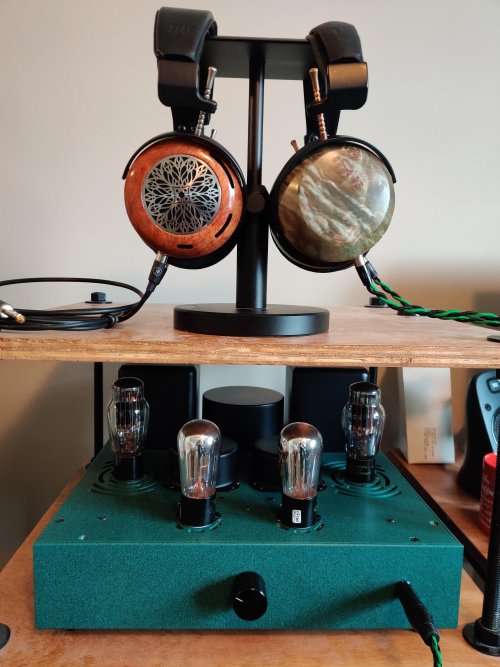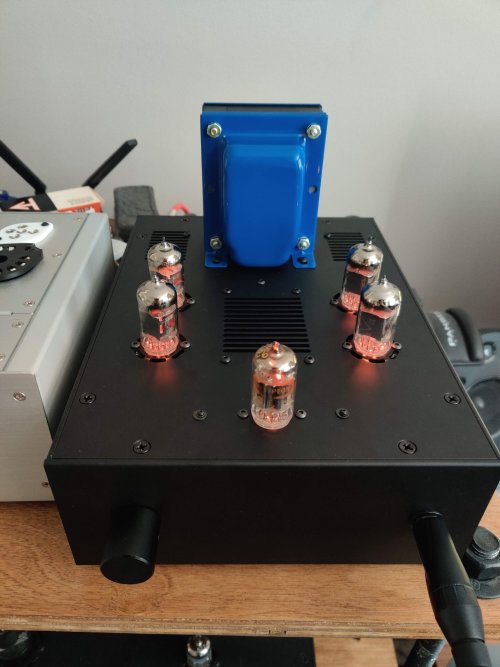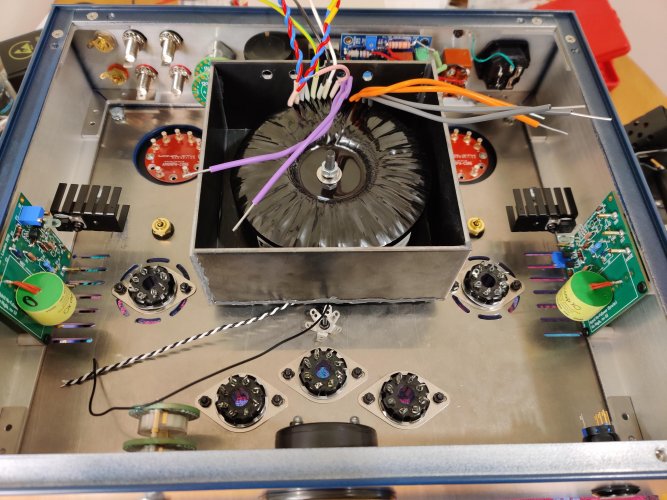Quick update: I hit my first major roadblock. I got some nice EL33s from Billington (which has been a pretty frustrating experience to be honest). I've been testing out the EL33s in my bottlehead crack which has been modified to take 6J5 tubes. To make it EL33 compatible, all I had to do was connect grid 2 to the anode with a 100R resistor and bam! EL33 compatible. The operating point isn't good (45V on the plate, 1.8V bias), but it serves as a good tester to make sure the tubes are working properly before I have my amp built.
Anyway, the EL33 seems to induce a very audible 120hz hum into the headphones. It happens with all 5 of the EL33s I have, but doesn't happen with any other input tube. I have used 6J5s for a long time in this amp, and also tried EL3Ns with EL3N -> 6J5 adapters, and there's no hum at all with any of those. So I'm pretty sure it's not the amp's fault. I ended up ordering a pair of EL33s of a different brand to see if they have the same problem. If they do, I will unfortunately have to rethink the amp and my tube choice.


Anyway, the EL33 seems to induce a very audible 120hz hum into the headphones. It happens with all 5 of the EL33s I have, but doesn't happen with any other input tube. I have used 6J5s for a long time in this amp, and also tried EL3Ns with EL3N -> 6J5 adapters, and there's no hum at all with any of those. So I'm pretty sure it's not the amp's fault. I ended up ordering a pair of EL33s of a different brand to see if they have the same problem. If they do, I will unfortunately have to rethink the amp and my tube choice.




























